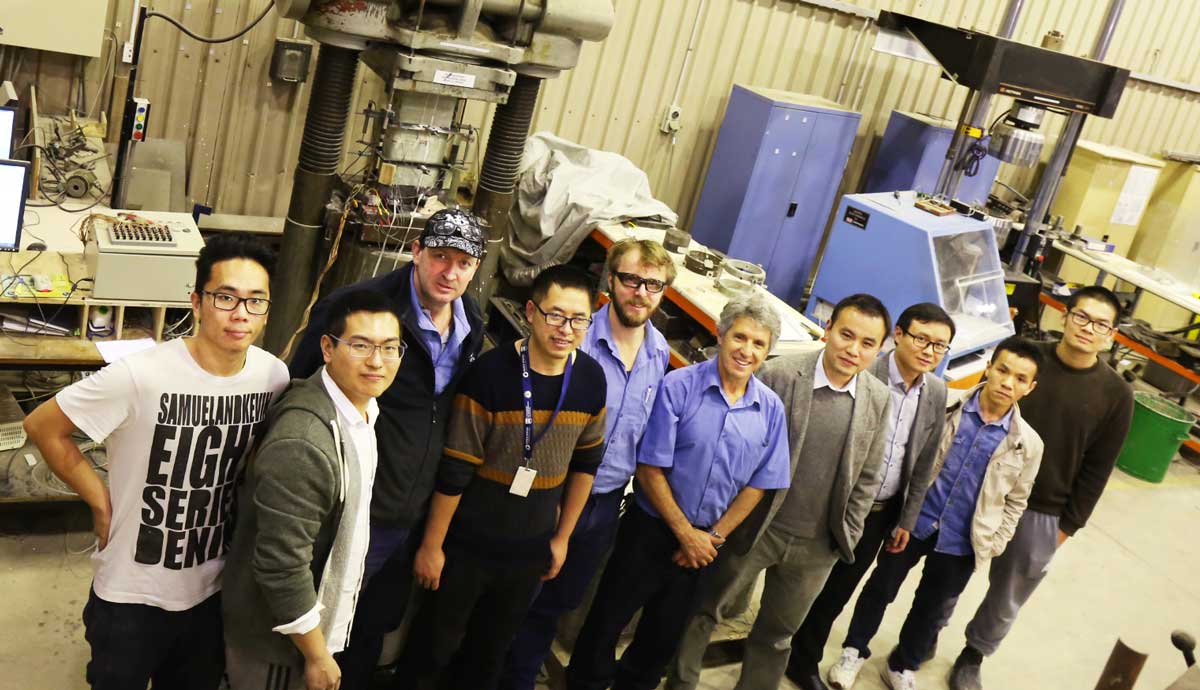July 11, 2017
Building composite strength in new construction materials
Conference explores novel, high-performing construction materials for resilient infrastructure.
A gathering of international experts and students will discuss advances in composite materials that could lead to stronger and more resilient infrastructure.
Fibre reinforced plastics (FRP) are being added to traditional construction materials, such as steel and concrete, due to their excellent resistance to corrosion and other chemical attacks, leading to excellent durability and longer service life.
This is particularly important for Australia as most major urban areas on the coastline are subjected to harsh environmental conditions leading to increased maintenance and replacement costs.
FRP composites also have a high strength-to-weight ratio: its strength can be ten times that of normal steel and its density is only around one-fourth that of steel, which enables novel forms of high-performance structures.
The International Symposium for Emerging Researchers in Composites for Infrastructure (ISERCI), hosted by researchers from UOW’s Faculty of Engineering of Information Sciences (EIS) this week, aims to provide an international forum for upcoming researchers, practitioners and rising stars in the area to share their recent developments in the use of FRP composites in research and practice, and to explore research and industry partnership opportunities.
Conference Chair Dr Tao Yu said the use of composite materials was initially explored in the strengthening of existing structures, and more recently in the construction of high-performance new structures.
“In the area of strengthening, externally bonded composite reinforcement is now a mainstream technology.
“In Australia, FRP has been used in many applications for strengthening of existing structures, including the strengthening of the West Gate Bridge in Melbourne.” he said.
“In the area of new construction, many innovative structural forms enabled by composites are being explored.
“While applications of composite materials are still limited in Australia, this technology has been rapidly evolving from initial technology demonstrators to become viable commercial alternatives to traditional solutions.”
Recent developments have included Dr Yu’s work on hybrid multi-tube concrete columns, which through the use of small, steel tubes inside an FRP tube and filled with concrete, packs large amounts of strength into a smaller size, reducing the difficulty of transporting and installing larger steel tubes need for columns to support building frames and the like.
“The construction industry would benefit from the excellent durability of the material,” Dr Tao said.
“FRP composites enabled novel forms of high-performance structures leading to more sustainable and resilient civil infrastructure for Australia and beyond.”
The UOW research group, the International Centre for Composites in Infrastructure (ICCI), was established in early 2016, with five founding partners: Hong Kong PolyU, Queen’s University Belfast, Tsinghua University, the University of Queensland and Southern Cross University.
Recently, the University of Adelaide, Zhejiang University and Swinburne University of Technology have joined the ICCI as partners, helping to develop advanced technologies for the use of composites in infrastructure through international collaborative research, and to engage in the transfer and dissemination of these technologies through continuing professional training and development of design codes and guidelines.
 The fibre reinforced concret research team, left to right: Chunwa Chan, Chong Rong, Ritchie McLean, Hongchao Zhao, Richard Berndt, Fernando Escribano, Tao Yu, Shishun Zhang, Le Huang, Kaidi Peng
The fibre reinforced concret research team, left to right: Chunwa Chan, Chong Rong, Ritchie McLean, Hongchao Zhao, Richard Berndt, Fernando Escribano, Tao Yu, Shishun Zhang, Le Huang, Kaidi Peng
:format(jpg)/prod01/channel_3/assets/live-migration/www/images/content/groups/public/web/media/documents/mm/uow235274.jpg)